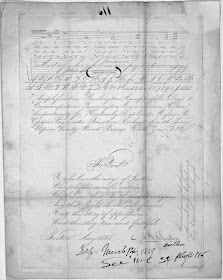Tom Harter was an advertising design instructor at Arizona State University. One of the core courses was lettering. Below are the plates, by C. Elliot Smith, from Harter’s lettering folder.
Below are my lettering assignments from 1972.
One of the assignments was to collect samples of type styles and put them in a binder. I did the title lettering and illustrated the cover with an image from the first issue of Marvel Premiere. Afterwards I decided to add the lightning bolt to Warlock’s chest; the bolt was glued on and has since fallen off and disappeared.
(Next post on Monday: Quicksilver)




















.jpg)


.jpg)
